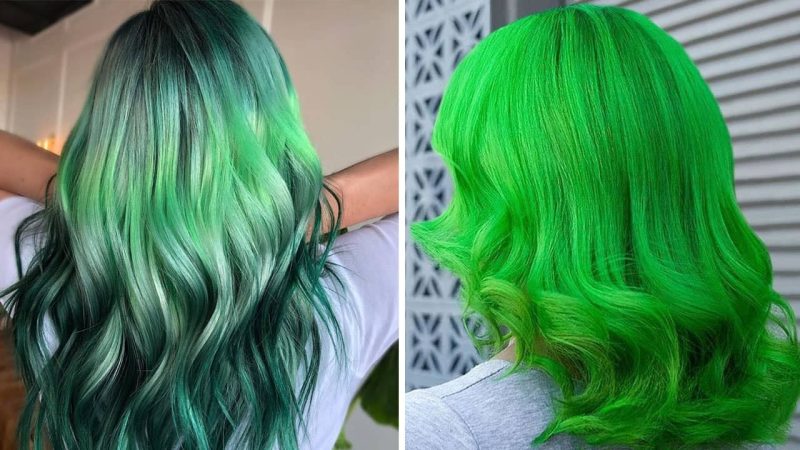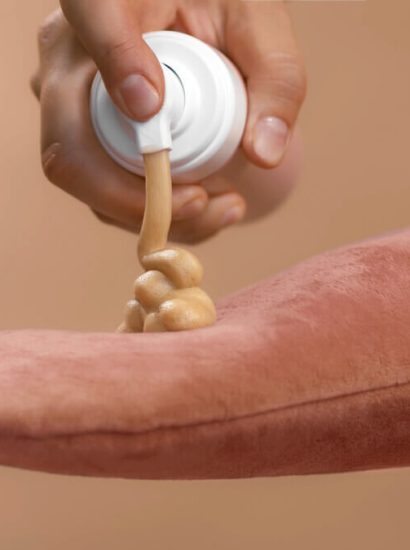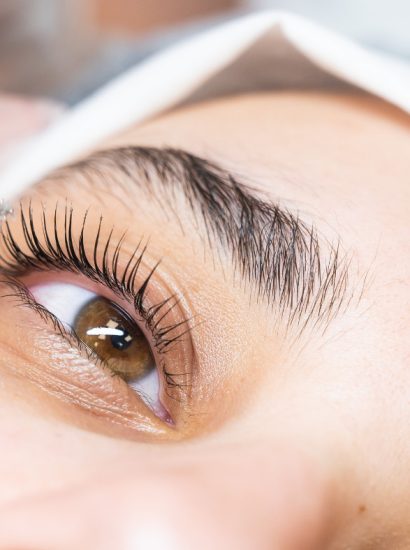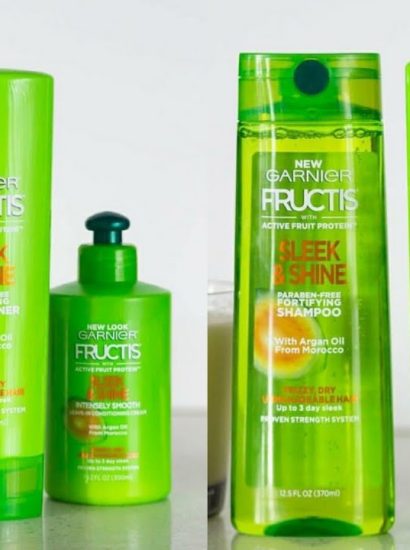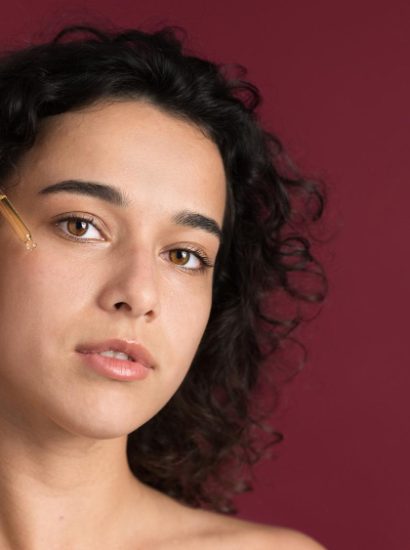If you’ve ever stepped out of the pool or washed your hair only to notice an odd green tint in blonde hair, you’re not alone. Many blondes experience this frustrating discoloration — but the good news is, it’s completely fixable.
In this comprehensive guide, we’ll uncover what causes green in blonde hair, how to remove it quickly, and the best ways to prevent it from happening again.
Chlorine and Copper: The Real Culprits Behind Green Hair
One of the biggest misconceptions is that chlorine itself turns blonde hair green. In reality, copper and other metals in pool water bind to the hair shaft. When these metals oxidize, they produce a greenish hue that clings to the porous structure of light-colored hair.
The combination of chlorine and metal ions acts like a chemical magnet for blondes, causing the infamous “swimmer’s green” effect.
Quick Fix:
Use a chelating shampoo or metal-removing treatment to dissolve copper deposits from your hair strands.
Hard Water and Mineral Buildup
Even if you don’t swim often, hard water can cause green in blonde hair. Minerals such as iron, copper, and magnesium accumulate on hair over time, dulling its shine and leaving behind a faint greenish tint.
Blonde and highlighted hair is especially vulnerable due to its porous structure, which absorbs minerals easily.
Solution:
Install a shower filter that removes heavy metals, and wash your hair weekly with a clarifying shampoo designed for mineral removal.
Hair Porosity and Previous Chemical Treatments
If your blonde hair has been bleached, colored, or highlighted, it’s more porous — meaning it absorbs water and minerals faster than untreated hair. This increases the risk of green discoloration, especially after exposure to pool water or hard water.
Prevention Tip:
Before swimming, saturate your hair with clean water or apply a leave-in conditioner. This creates a barrier that prevents mineral absorption.
Using the Wrong Hair Products
Some shampoos and conditioners contain ingredients that interact with minerals in water, intensifying discoloration. For example, products with sulfates strip the natural oils that protect your hair, making it easier for copper and chlorine to penetrate.
Better Choice:
Switch to sulfate-free, color-safe products designed specifically for blonde or color-treated hair.
Environmental Exposure
Blonde hair can also take on a green tint from environmental pollution, rainwater, or even oxidized metals in pipes. Over time, this exposure causes the same oxidation reaction that turns jewelry green — except it’s happening to your hair!
Pro Tip:
Rinse your hair thoroughly after outdoor exposure, especially if you live in an area with high pollution or old plumbing.
Swimming Without Hair Protection
Swimming caps might not be the most fashionable accessory, but they’re one of the best defenses against green in blonde hair. Without protection, chlorine and metals cling to wet hair, especially during long swims.
Preventive Action:
Coat your hair with coconut oil or a leave-in treatment before swimming, and wear a snug-fitting swim cap to reduce chemical absorption.
Ineffective Post-Swim Rinsing
Even if you use a pool-safe shampoo, failing to rinse your hair immediately after swimming allows chemicals to linger and oxidize. The longer they sit, the deeper they penetrate — and the greener your blonde hair becomes.
Quick Tip:
After every swim, rinse with fresh water and a gentle clarifying shampoo to neutralize chlorine before it sets in.
Incorrect Toner or Hair Dye Use
Sometimes, the green hue doesn’t come from external sources — it’s a result of toner or color mishaps. Using an ash or blue-based toner on blonde hair can unintentionally create a greenish cast, especially if applied over warm or yellow tones.
Fix:
Use a red or warm gold color-correcting toner to balance out the green tones. Red neutralizes green on the color wheel.
Chemical Reactions with Hair Treatments
Mixing protein treatments, keratin, or other salon products with pool water or hard water can trigger chemical reactions that alter your hair’s color. The combination can leave your blonde strands brassy, dull, or slightly greenish.
Tip:
Wait at least 48–72 hours after any salon treatment before swimming or using metal-heavy water sources.
Lack of Regular Maintenance
Without consistent care, blonde hair becomes a magnet for discoloration. Green buildup can accumulate subtly over time — you may not notice it until your hair loses its brightness.
Maintenance Routine:
- Deep-clean once a week with a clarifying shampoo.
- Use a purple shampoo to balance undertones.
- Incorporate a weekly hydrating mask to restore strength and shine.
How to Get Rid of Green in Blonde Hair — Proven Home Remedies
Now that you know what causes green in blonde hair, here’s how to fix it safely at home.
Tomato Juice or Ketchup Method
It might sound odd, but tomato juice (or even ketchup) works because of its acidic pH and red pigments that neutralize green tones.
How to Use:
Apply it directly to damp hair, leave for 5–10 minutes, and rinse thoroughly with a mild shampoo.
Apple Cider Vinegar Rinse
Apple cider vinegar removes mineral buildup and restores shine.
DIY Mix:
Combine 1 part vinegar to 3 parts water, pour over your hair after shampooing, let sit for 2–3 minutes, and rinse.
Lemon Juice and Baking Soda
Lemon juice helps strip away oxidation, while baking soda acts as a natural cleanser.
How to Apply:
Mix 1 tablespoon of baking soda with 1 tablespoon of lemon juice, apply to green areas, leave for 3–4 minutes, and rinse thoroughly.
Clarifying or Chelating Shampoo
If you swim often, invest in a professional-grade chelating shampoo formulated for swimmers. These shampoos contain ingredients that remove metal ions and chlorine effectively.
Best Practice:
Use once weekly and follow with a deep conditioner to prevent dryness.
Salon Toning Treatment
When home remedies aren’t enough, visit a salon. A colorist can apply a red or warm gold toner to cancel out green hues and restore your natural blonde shade without damage.
How to Prevent Green in Blonde Hair
- Rinse hair before entering chlorinated or hard water.
- Apply a leave-in conditioner or natural oil as a protective coating.
- Use a swim cap during prolonged pool exposure.
- Wash with clarifying shampoo weekly.
- Maintain proper moisture balance to prevent porosity.
- Use water filters to minimize mineral exposure.
By maintaining these habits, you can keep your blonde hair bright, vibrant, and free from that unwanted green tint.
Conclusion
Green in blonde hair can be annoying, but understanding the science behind it empowers you to prevent and fix it. Whether caused by chlorine, copper, or hard water, the solution lies in balancing protection, cleansing, and toning.
With proper care, your blonde can stay radiant, luminous, and beautifully free of green undertones year-round.
FAQs
1. Why does blonde hair turn green after swimming?
Blonde hair turns green due to oxidized copper and chlorine in pool water binding to the hair shaft — not from the chlorine itself.
2. How can I remove green in blonde hair instantly?
Try a tomato juice or baking soda rinse for quick results. These home remedies neutralize green tones and remove buildup effectively.
3. Can purple shampoo remove green tint from blonde hair?
Not always. Purple shampoo neutralizes yellow or brassy tones, not green. For green hues, use a red-based toner instead.
4. How do I prevent my hair from turning green in the pool?
Wet your hair with clean water before swimming, apply a leave-in conditioner, and rinse immediately afterward to prevent absorption.
5. Is it safe to use vinegar on blonde hair?
Yes — apple cider vinegar is safe when diluted properly. It gently removes minerals without damaging hair if used occasionally.
Also read: 10 Different Types of Gel Manicures: A Complete Guide for Perfect Nails

